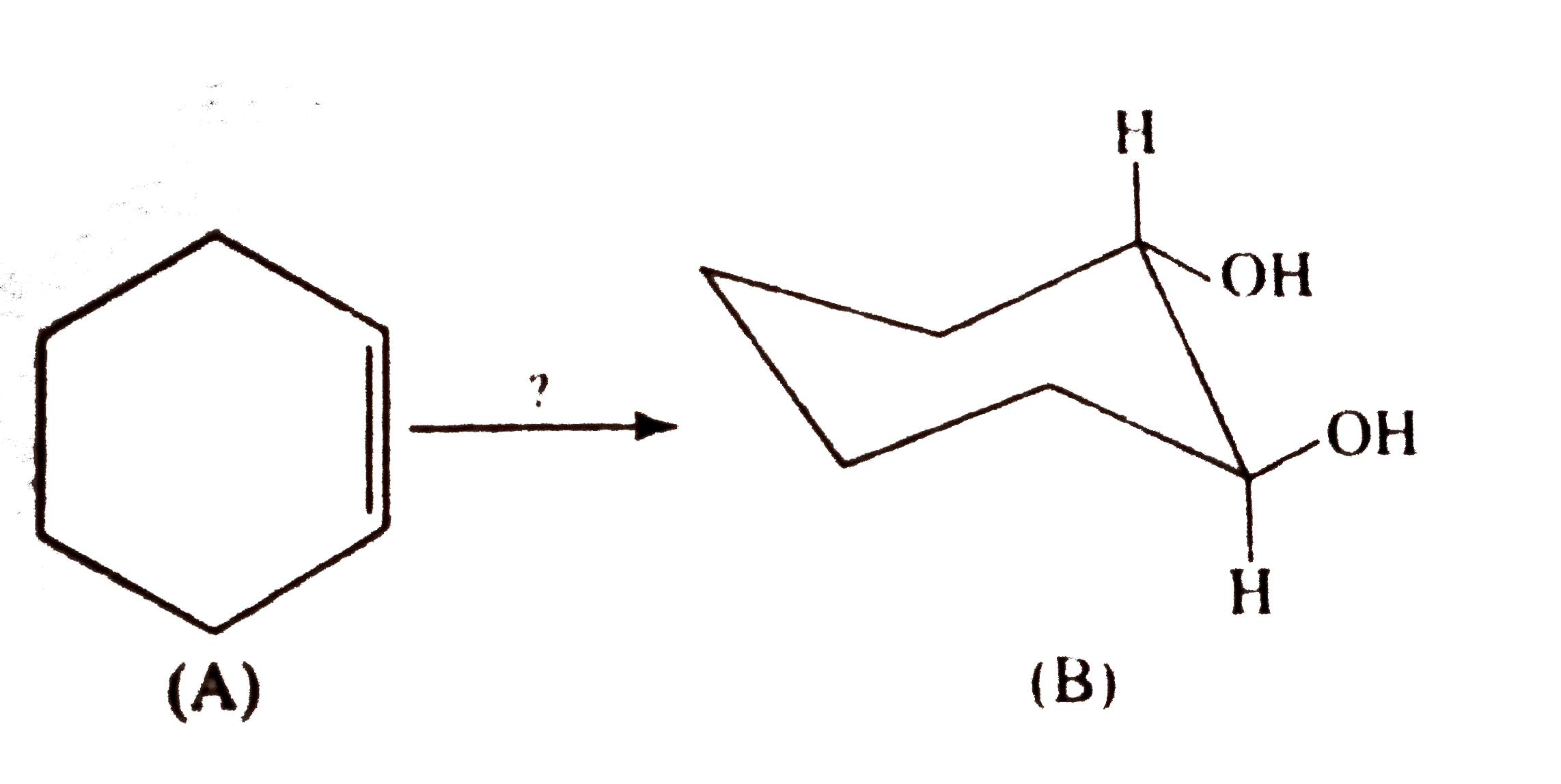Which one of the following reagents can be used for differentiating the nitrates of Cu2+ and Bi3+?
Excess of water
NH4OH (excess)
Excess of KI
All of above
The correct Answer is:D
To differentiate between the nitrates of Cu2+ and Bi3+, we can use three different reagents: excess water, ammonium hydroxide, and excess potassium iodide (KI). Let's analyze the reactions step by step.
Step 1: Reaction with Excess Water
1. Copper(II) Nitrate (Cu(NO3)2): When treated with excess water, there is no observable change. The copper ions remain in solution.
2. Bismuth Nitrate (Bi(NO3)3): In contrast, bismuth nitrate reacts with excess water to form a white precipitate of bismuth oxide nitrate (BiO(NO3)).
Conclusion: Excess water can differentiate between Cu2+ (no change) and Bi3+ (white precipitate).
Step 2: Reaction with Excess Ammonium Hydroxide
1. Copper(II) Nitrate: When treated with excess ammonium hydroxide, it forms a deep blue complex, specifically Cu(NH3)2+4.
- Reaction:
Cu2++4NH4OH→Cu(NH3)2+4+4H2O
2. Bismuth Nitrate: On the other hand, bismuth reacts with ammonium hydroxide to form a white precipitate.
- Reaction:
Bi3++3NH4OH→Bi(OH)3 (white precipitate)+3NH+4
Conclusion: Ammonium hydroxide can also differentiate between Cu2+ (deep blue solution) and Bi3+ (white precipitate).
Step 3: Reaction with Excess Potassium Iodide (KI)
1. Copper(II) Nitrate: When treated with excess KI, it forms a white precipitate of cupric iodide (Cu2I2).
- Reaction:
Cu2++4I−→Cu2I2 (white precipitate)+I2
2. Bismuth Nitrate: In contrast, bismuth reacts with KI to form a soluble orange complex BiI−4.
- Reaction:
Bi3++4I−→BiI−4 (orange solution)
Conclusion: Excess KI can also differentiate between Cu2+ (white precipitate) and Bi3+ (orange solution).
Final Conclusion
Since all three reagents (excess water, ammonium hydroxide, and excess KI) can differentiate between Cu2+ and Bi3+, the correct answer is all of the above.
1. Copper(II) Nitrate (Cu(NO3)2): When treated with excess water, there is no observable change. The copper ions remain in solution.
2. Bismuth Nitrate (Bi(NO3)3): In contrast, bismuth nitrate reacts with excess water to form a white precipitate of bismuth oxide nitrate (BiO(NO3)).
1. Copper(II) Nitrate: When treated with excess ammonium hydroxide, it forms a deep blue complex, specifically Cu(NH3)2+4.
- Reaction:
Cu2++4NH4OH→Cu(NH3)2+4+4H2O
2. Bismuth Nitrate: On the other hand, bismuth reacts with ammonium hydroxide to form a white precipitate.
- Reaction:
Bi3++3NH4OH→Bi(OH)3 (white precipitate)+3NH+4
1. Copper(II) Nitrate: When treated with excess KI, it forms a white precipitate of cupric iodide (Cu2I2).
- Reaction:
Cu2++4I−→Cu2I2 (white precipitate)+I2
2. Bismuth Nitrate: In contrast, bismuth reacts with KI to form a soluble orange complex BiI−4.
- Reaction:
Bi3++4I−→BiI−4 (orange solution)
Since all three reagents (excess water, ammonium hydroxide, and excess KI) can differentiate between Cu2+ and Bi3+, the correct answer is all of the above.
Topper's Solved these Questions
Similar Questions
Knowledge Check
- Question 1 - Select One or More
Which of the following reagents can be used for identification of phenol ?
ANeutral FeCl3BNaNO2+HClC(NH4)2[Ce(NO3)6]DZnCl2/HCl - Question 2 - Select One or More

Which of the following reagents can be used for above conversion?AZn/ΔBMg/ΔCNaI/acetoneDAlc. KOH - Question 3 - Select One or More
Which of the following reagents can be used to differentiate 1∘ and
3∘ alcohols ?APCCBK2Cr2O7/H⊕CJones reagentDBr2−H2O

Which of the following reagent can be used for above conversion ?View SolutionWhich of the following reagent can be used to separate AgCl and AgI?
View SolutionWhich of the following reagents can be used to distinguish phenol from Anisole ?
View SolutionWhich of the following reagents cannot be used for the given conversion?
 View Solution
View SolutionWhich of the following reagents cannot be used for differentiation between glucose and fructose ?
View Solution


